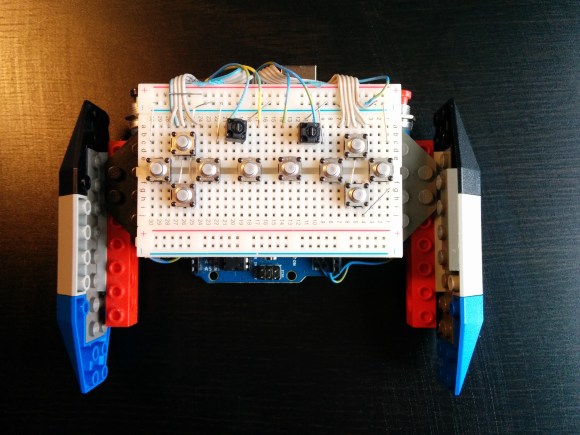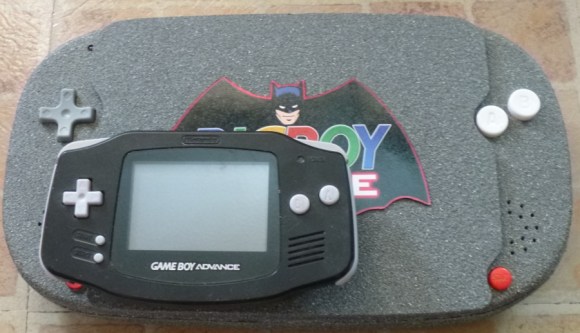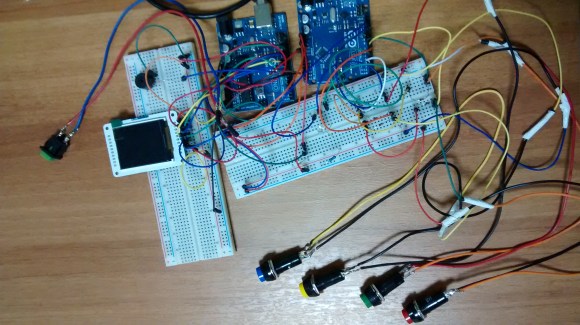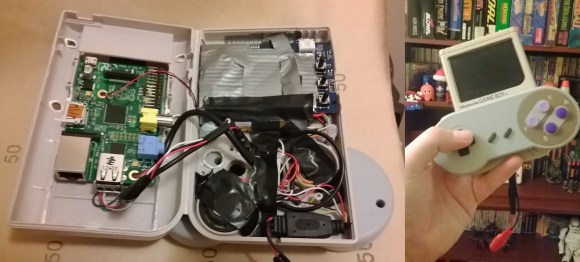
[StrangeMeadowlark] decided one day to create this badass Arduino-based gaming controller. Not for any particular reason, other than, why the heck not?!
It looks like a tiny Lego spaceship that has flown in from a nearby planet, zooming directly into the hands of an eager Earthling gamer. With buttons of silver, this device can play Portal 1 and 2, Garry’s Mod, Minecraft, and VisualBoy Advance. Although more work is still needed, the controller does the job; especially when playing Pokemon. It feels like a Gameboy interface, with a customizable outer frame.
Sticky, blue-tack holds a few wires in place. And, most of the materials are items that were found around the house. Like the gamepad buttons on top; they are ordinary tactile switches that can be extracted from simple electronics. And the Legos, which provide an easy way to build out the body console, rather than having to track down a 3D printer and learning AutoCAD.
Continue reading “A Lego Game Controller; Just For The Hack Of It”

 [Neven Boyanov] says there’s nothing special about
[Neven Boyanov] says there’s nothing special about 
 Summer is upon us. The
Summer is upon us. The 












